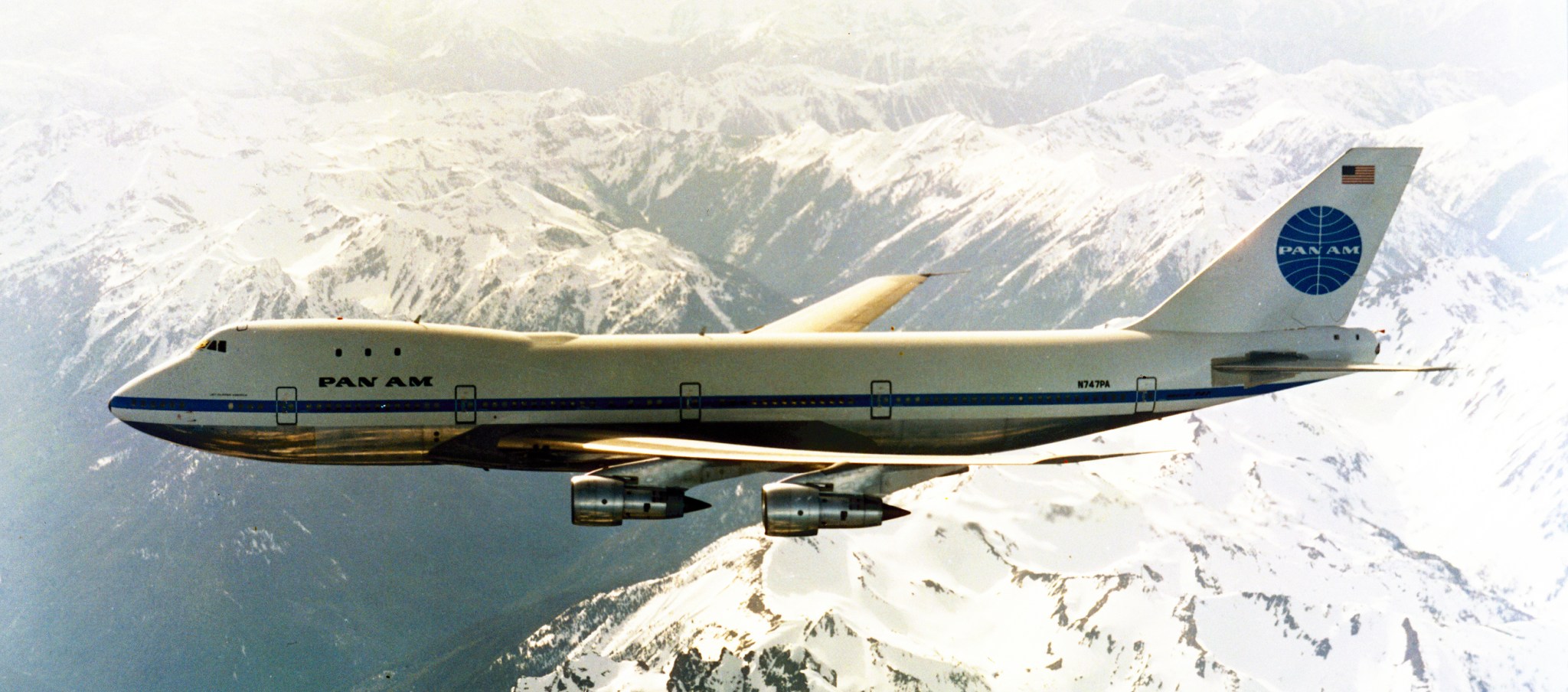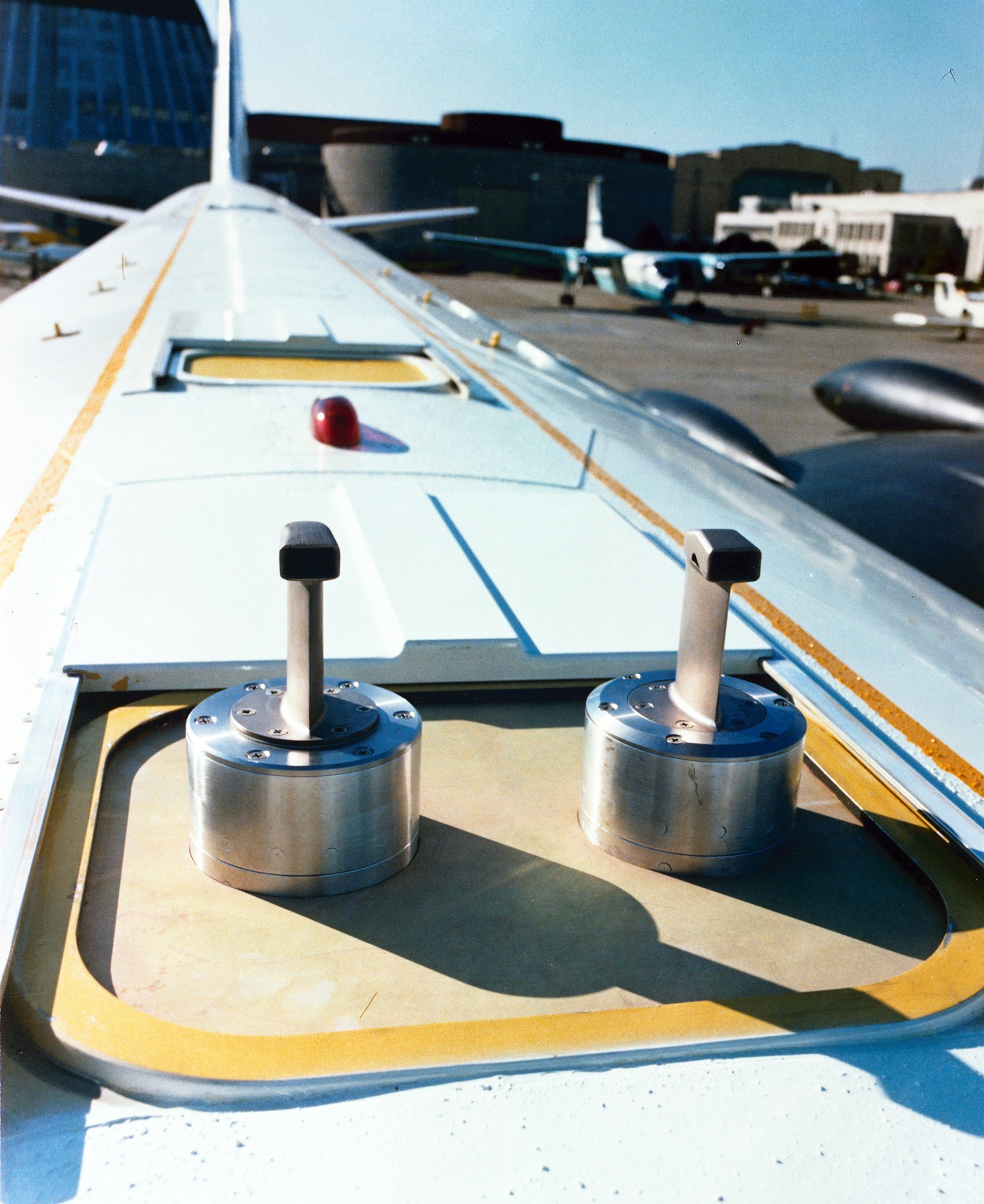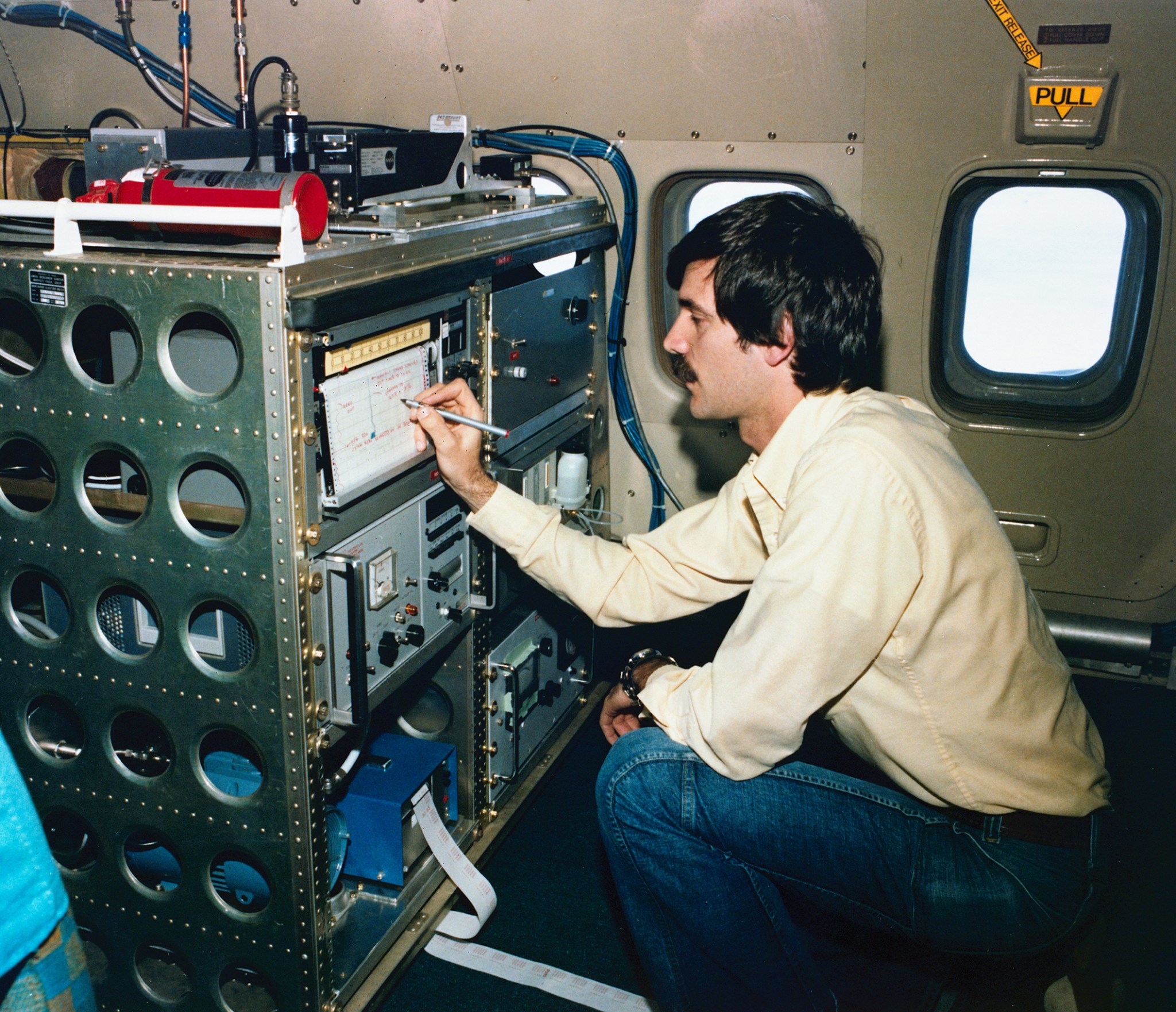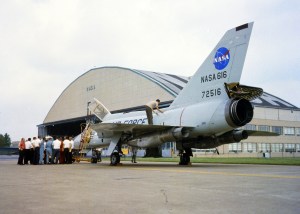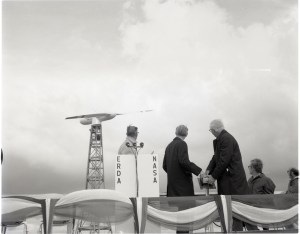Following the passage of the Clean Air Act of 1970, new standards were established to dramatically reduce aircraft engine emissions. As NASA began to explore mitigating technologies, such as the Clean Combustor, it was necessary to determine the nature and concentration of contaminants in the upper atmosphere. Such an undertaking required a global approach.
In 1972 NASA’s Lewis Research Center initiated the Global Air Sampling Program (GASP) to create a database of particulate levels in the air lanes frequented by commercial airliners. Researchers could use the information in conjunction with computer modeling and existing data to determine the effect of aircraft engine emissions on the upper atmosphere.
NASA researchers secured agreements with four airline companies to install automated air sampling equipment on a Boeing 747 aircraft to take measurements during normal flights. The program was managed by NASA Engineer Porter Perkins who worked with airlines on a similar effort in the 1950s involving the measurement of icing conditions.
The 747 flights began in December 1974 and soon included routes all over the world, including the North and South Poles. Nearly 7,000 sampling flights were conducted before the program ended in 1979. The airliner data was supplemented by additional sampling by Lewis’ F-106B and NASA Ames’ CV-990 research aircraft. In addition, Lewis flew several flights with its Learjet specifically to measure ozone levels inside aircraft cabins.
Each aircraft carried a particle collector and NASA-modified commercial air samplers. Air flowed into two tubes jutting from the front of the aircraft to the collector that gathered particles for later analysis and to the equipment that measured elements such carbon monoxide, ozone, and water vapor.
The GASP system, which required no in-flight attention from the crew, took readings every five minutes during normal cruising at altitudes between 20,000 and 40,000 feet.
GASP documented the size, composition, and concentration of aerosol particles, as well as concentrations of carbon monoxide and ozone. Lewis researchers later synched each data point up with flight, location, and metrological information. The final data were then archived at the National Climate Center in North Carolina.
In many cases, the GASP flights produced the first atmospheric analysis for particular geographical areas. It significantly boosted the existing data for other regions and substantially enhanced weather balloon and ground station recordings. Researchers have used the GASP database over the years for a variety of studies and analysis.
Top Image: This Pan Am 747 began participating in the GASP program in March 1975. In addition to its normal worldwide flights, Pan Am contributed data from a 50th anniversary flight that flew over both poles.
Robert S. Arrighi
NASA Glenn Research Center
This article originally appeared in NASA History News & Notes, Volume 387, Numbers 2 & 3, Third Quarter 2021.




























